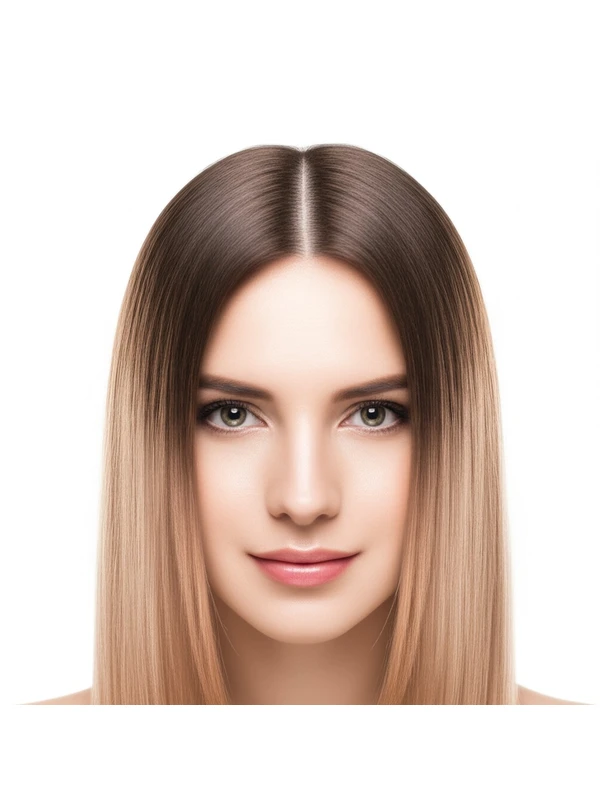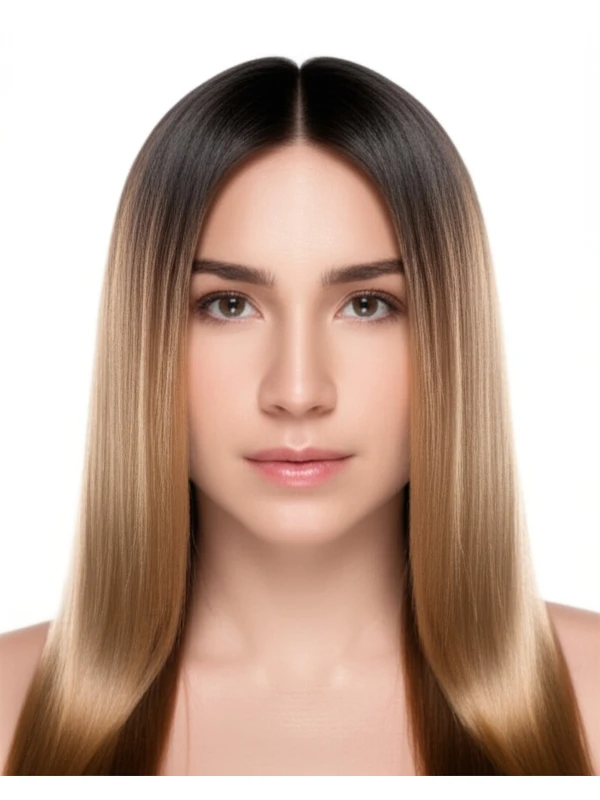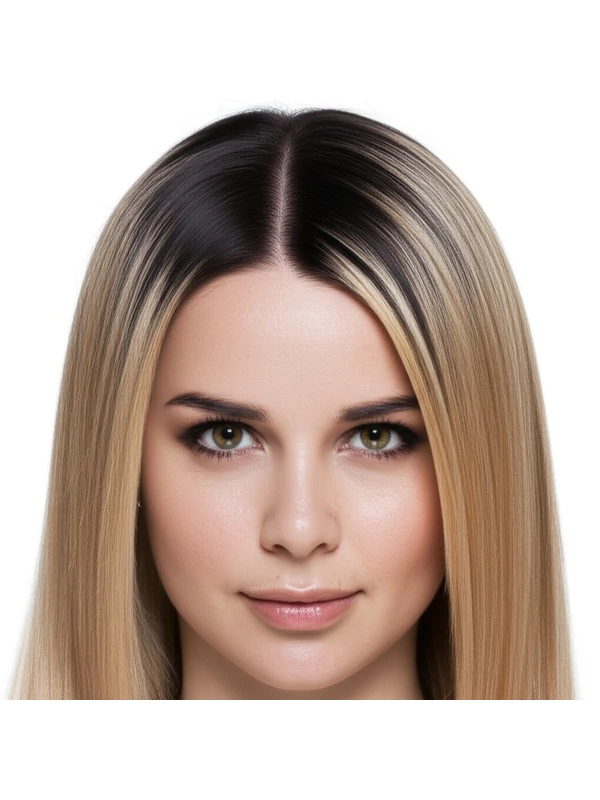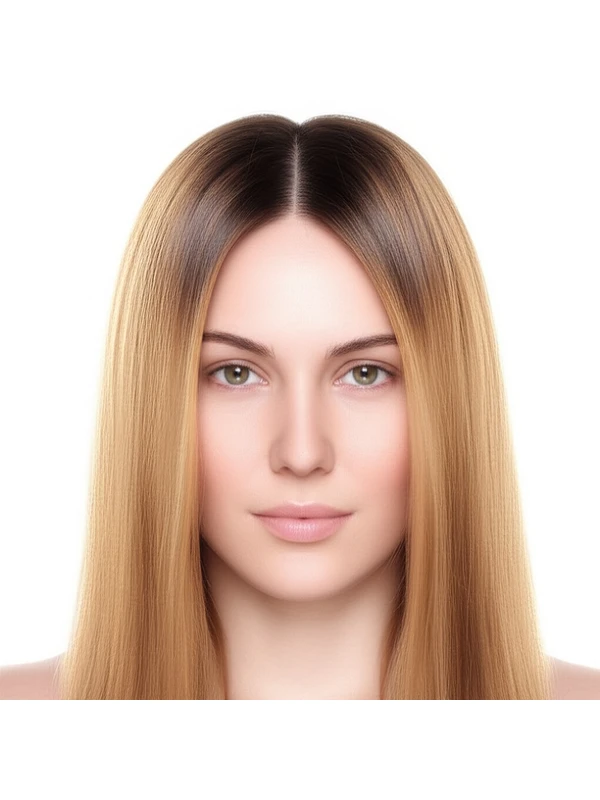#Root Tap: A Gentle Approach to Dimension
Root tap is a popular hair coloring technique gaining traction for its soft, blended results and low-maintenance appeal. It's designed to add dimension without the harsh lines often associated with traditional highlights. Let’s break down everything you need to know about this trend.
#1) Definition & How it Works
Root tap isn’t a single process but an approach – how your colorist applies lightener or gloss to achieve a specific look. It's all about placement and timing!
- The Tools: Your stylist will use a balayage brush (often angled for precision), foils (sometimes, depending on the desired intensity), and possibly a tint brush.
- Placement is Key: Unlike traditional highlights where sections are meticulously separated, root tap involves sweeping or tapping lightener/gloss onto the hair near the roots. The placement isn't uniform; it’s strategic to create soft transitions. The stylist will focus on areas that naturally catch the light.
- Timing Matters: This is crucial! The product sits for a shorter time than traditional highlights, typically 10-25 minutes, depending on hair lift and desired result. Your colorist constantly checks the tone during processing to prevent over-lifting. A gloss or toner is almost always applied afterward to refine the shade and add shine.
- The “Tap”: The term "tap" comes from how some stylists apply the product – gently tapping it onto sections rather than sweeping in long strokes, creating a more diffused effect.
#2) Best Use Cases: Goals It Achieves
Root tap excels at several aesthetic goals:
- Natural Dimension: This is its primary purpose! It creates subtle highlights and lowlights for depth and movement.
- Root Blur/Shadow Root Effect: The gentle application minimizes the contrast between your natural roots and colored hair, creating a soft shadow root that grows out beautifully.
- Face-Framing Highlights: Strategically placed "taps" around the face can brighten features and add softness to angles.
- Subtle Coverage (of greys): While not designed for full grey coverage, it can blend away some grey hairs, particularly when combined with a gloss or toner. Full grey coverage requires a different approach.
- Low-Contrast Brightening: Adds brightness without the high contrast look of traditional highlights.
#3) Who It Suits: Finding Your Ideal Match
Root tap is surprisingly versatile but works best for certain hair types and preferences:
- Natural Color Level: Works well on levels 2 (light brown) to 7 (medium blonde). Those with darker starting colors may need multiple sessions.
- Undertones: Root tap can complement both warm (golden, copper) and cool (ashy, platinum) undertones. Your stylist will choose tones that enhance your complexion.
- Hair Type/Texture:
- Straight Hair: Shows off the dimension beautifully with clear separation of highlights.
- Wavy Hair: The waves naturally diffuse the color for a softer look.
- Curly & Coily Hair: Root tap can add shine and definition, but careful placement is vital to avoid disrupting curl patterns. It's particularly good when combined with texturizing techniques.
- Density: Works on all densities – adjustments are made in product amount and sectioning.
- Length: Looks fantastic on short bobs to long hair.
- Lifestyle: Ideal for those seeking a low-maintenance, natural look who don't want frequent salon visits or harsh root lines.
#4) Compared to Similar Techniques
Understanding the differences is key:
- Balayage vs. Root Tap: Balayage is broader and more freehand; it creates overall brightness. Root tap is more precise, focusing on dimension near the roots and utilizing a gentler process for softer transitions.
- Foilyage vs. Root Tap: Foilyage combines balayage painting with foils to lift hair lighter and faster, creating brighter highlights. Root tap uses less foil (or none at all) for a more diffused effect.
- Highlights vs. Root Tap: Traditional highlights involve distinct sections of lightened hair; root tap blends the color more seamlessly into the roots.
- Root Smudge/Shadow Root vs. Root Tap: A shadow root is just toning down the root line to create a blurred effect, whereas root tap incorporates lightening and then toning for added dimension. A root smudge focuses solely on blending; root tap aims for overall color enhancement.
#5) Maintenance & Longevity
Planning ahead ensures you love your hair:
- Salon Timing: Expect an initial appointment of around 2-3 hours, depending on hair length and complexity.
- Toner/Gloss Refresh: A toner or gloss is typically needed every 6-12 weeks to maintain the desired tone and shine. This takes about 30-60 minutes.
- Grow-Out Behavior: The soft root line grows out naturally, requiring minimal touch-ups compared to traditional highlights. You’ll notice more dimension as your hair grows.
- Budget/Time Planning: Initial service: $150 - $400+. Gloss/toner refresh: $75-$200+. Factor in every 6–12 weeks for toner.
#6) At-Home Care Tips
Protecting your investment is essential:
- Wash Cadence: Wash hair less frequently (2-3 times per week).
- Heat Protection: Always use a heat protectant spray before using any hot styling tools.
- Color-Safe Products: Use shampoos and conditioners specifically formulated for color-treated hair – these are gentler and help prevent fading.
- Deep Conditioning: Incorporate a deep conditioning mask once or twice a week to keep hair hydrated and healthy.
#7) Pros & Cons
Weighing the options:
Pros:
- Low maintenance grow-out
- Soft, natural look
- Adds dimension without harsh lines
- Versatile for various hair types and lengths
- Gentler on hair than traditional highlights (often)
Cons:
- May require multiple sessions for darker starting colors.
- Not ideal for full grey coverage.
- Can be more expensive than a single-process color due to the technique’s complexity.
#8) Salon Consultation Script Prompts
Your stylist should ask you these questions:
- What is your current hair color and level? (Show photos if possible!)
- What are your goals for this appointment? (More brightness, dimension, softer roots?)
- Do you have any grey hairs you’d like to blend away?
- How much time/budget do you want to allocate for maintenance appointments?
- Are there any areas of your hair that need special attention (e.g., face-framing)?
- What is your typical styling routine and what products do you use?
#9) FAQs
- Can root tap be done on fine hair? Yes, but the stylist will use a lower volume developer to avoid damage and ensure the color integrates well without weighing down the hair.
- Is root tap damaging to my hair? Like any coloring process, it involves chemicals. However, because of the gentle application and shorter processing time, it's generally less damaging than traditional highlights. Your stylist’s expertise is crucial here!
- How long does a root tap last? The color itself lasts until your next toner/gloss refresh (6-12 weeks). The "root shadow" effect grows out beautifully for several months.
- Can I do root tap at home? While possible, it’s highly recommended to have this done by a professional. Precise placement and timing are crucial for the desired result. Incorrect application can lead to uneven color or damage.
- What's the difference between root tap and babylights? Babylights are much finer highlights that create an overall brightening effect, while root tap focuses on dimension near the roots with a softer transition.
- Will root tap work if I have previously colored my hair? It depends! Your stylist will assess your hair's condition and previous color history to determine suitability. Prior damage can affect how the color lifts.
- What should I do if my toner fades quickly after a root tap? Ensure you’re using color-safe shampoo and conditioner, avoid excessive heat styling, and consider a gloss refresh sooner than scheduled.
- Can I get root tap on previously bleached hair? It's possible but requires careful assessment by your stylist to ensure the hair is healthy enough to handle additional processing.




